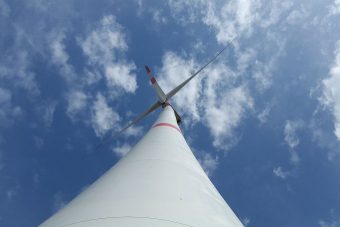
A total of eleven new electricity projects totaling more than 3 gigawatts were awarded contracts by the UK Government today in the country’s latest competitive auction for Contracts for Difference, including three offshore wind farms which included an impressive low strike price of only £57.50 per megawatt-hour.
The UK Department for Business, Energy and Industrial Strategy announced the results of the competitive auction today, in which eleven new projects worth up to £176 million successfully won Contracts for Difference (CfD) amounting to more than 3 gigawatts (GW) of electricity. The projects — which include three offshore wind farms and two biomass projects — are expected to provide the power equivalent to supply 3.6 million homes.
“We’ve placed clean growth at the heart of the Industrial Strategy to unlock opportunities across the country, while cutting carbon emissions,” said UK Minister for Energy and Industry, Richard Harrington. “The offshore wind sector alone will invest £17.5bn in the UK up to 2021 and thousands of new jobs in British businesses will be created by the projects announced today. This government will continue to seize these opportunities as the world moves towards a low carbon future, and will set out ambitious proposals in the upcoming Clean Growth Plan.”
Expectations were high for this particular auction, specifically as they pertained to the offshore wind sector. RenewableUK, the country’s trade body for the offshore wind industry, predicted record low strike prices in the auction. “Monday’s auction results could be a watershed moment for the UK offshore wind sector,” said Emma Pinchbeck, RenewableUK’s Executive Director. “The offshore wind sites that win on Monday will be a catalyst for our future economy and will provide cheap, clean electricity for UK consumers.”
The last Contracts for Difference auction was held back in February of 2015 and the two offshore wind projects that successfully won contracts succeeded at strike prices of £119.89 MW/h and £114.39 MW/h.
This time around, those looking for massive cost reductions were not disappointed, with prices on average dropping 47%. Specifically, DONG Energy’s 1,386 MW Hornsea 2 off the coast of Yorkshire, and EDPR’s 950 MW Moray off the northeast coast of Scotland both won with strike prices of £57.50 MW/h (expected to begin generating in 2022/23), while Innogy and Statkraft’s 860 MW Triton Knoll off the coast of Lincolnshire walked away with a strike price of £74.75 MW/h (expected to begin generating in 2021/22).
“We knew today’s results would be impressive, but these are astounding,” crowed RenewableUK’s Chief Executive Hugh McNeal. “Record-breaking cost reductions like the ones achieved by offshore wind are unprecedented for large energy infrastructure. Offshore wind developers have focused relentlessly on innovation, and the sector is investing £17.5bn into the UK over the next 4 years whilst saving our consumers money.”
Also winning in the auction were two biomass with combined heat & power (CHP) projects, both of which won with strike prices of £74.75 MW/h and expect to begin generating in 2021/22, as well as six advanced conversion technologies projects that included primarily strike prices of £74.75 MW/h to begin generating in 2021/22, but an impressively low £40 MW/h that is expected to begin generating in 2022/23.
“The latest renewables auction show huge price reductions across the board, with offshore wind, energy from waste and biomass clearing at prices from £57.50-£74.75,” added James Court, Head of Policy and External Affairs at the Renewable Energy Association. “These results show that renewables are now the most cost effective form of any energy generation which can future proof both the UK grid and provide sustainable new jobs in the UK.
“Offshore wind’s success shows what can happen with government support, and consider that this auction was for so called ‘less established’ technologies, with the more mature onshore wind and solar blocked to market. Surely now is the time for the government to commit to a low carbon industrial strategy.”
Source: cleantechnica.com




